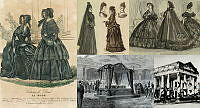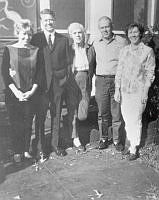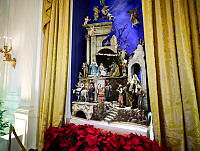
Treasures of the White House: Lighter Relieving a Steamboat Aground
978.13392.1
This painting brings to life an era and a region in which storytelling was at once a way of life and an art form. Bingham was raised on the banks of the Missouri River near St. Louis, and he became its historian. He knew the river well, and as a young man he witnessed the change in its character as the flatboats that drifted with the current or were poled against it were supplanted by steamboats in the 1830s.
This is, as far as we know, the first painting in which Bingham depicted an accident on the river. The steamboat in the distance has run aground on a shoal, and this boat in distress probably alludes to a key political issue of the day. Obtaining federal funds to improve navigation and thus facilitate trade on the western rivers through the removal of snags, shoals, and sawyers was a primary goal of the Whig party in Missouri. In 1846 Bingham ran as a Whig for the Missouri House of Representatives. He was elected, but the results were contested. The Democrat-controlled legislature decided against him, and he was forced from office. Shortly afterward, to the fury of the Whigs, the Democratic President James K. Polk vetoed the River and Harbor Bill.
Although Bingham may indeed have had a political subtext in this painting, his primary focus is on the self-sufficient boatmen, his heroes. Having removed cargo from the steamer ("lightened" it so it can float free from the shoal), they have turned from it to listen to their storyteller. In the words of Henry David Thoreau, Bingham's contemporary, they are "building castles in the air for which earth offered no worthy foundation." Of this and another picture, a St. Louis reporter wrote that the artist has chosen "the simplest, most frequent and common occurrences on our rivers... precisely those in which the full and undisguised character of the boatmen is displayed."
Source: William Kloss, et. al., Art in the White House, New York: Abrams, 1992.
- Artist
- George Caleb Bingham (1811-1879)
- Medium
- Oil on canvas, 3O~II6 x 363h6 inches (77 x 91.9 cm)
- Credit
- Partial gift of an anonymous donor, 1978, and Mr. and Mrs. Walter Shorenstein, 1981



































